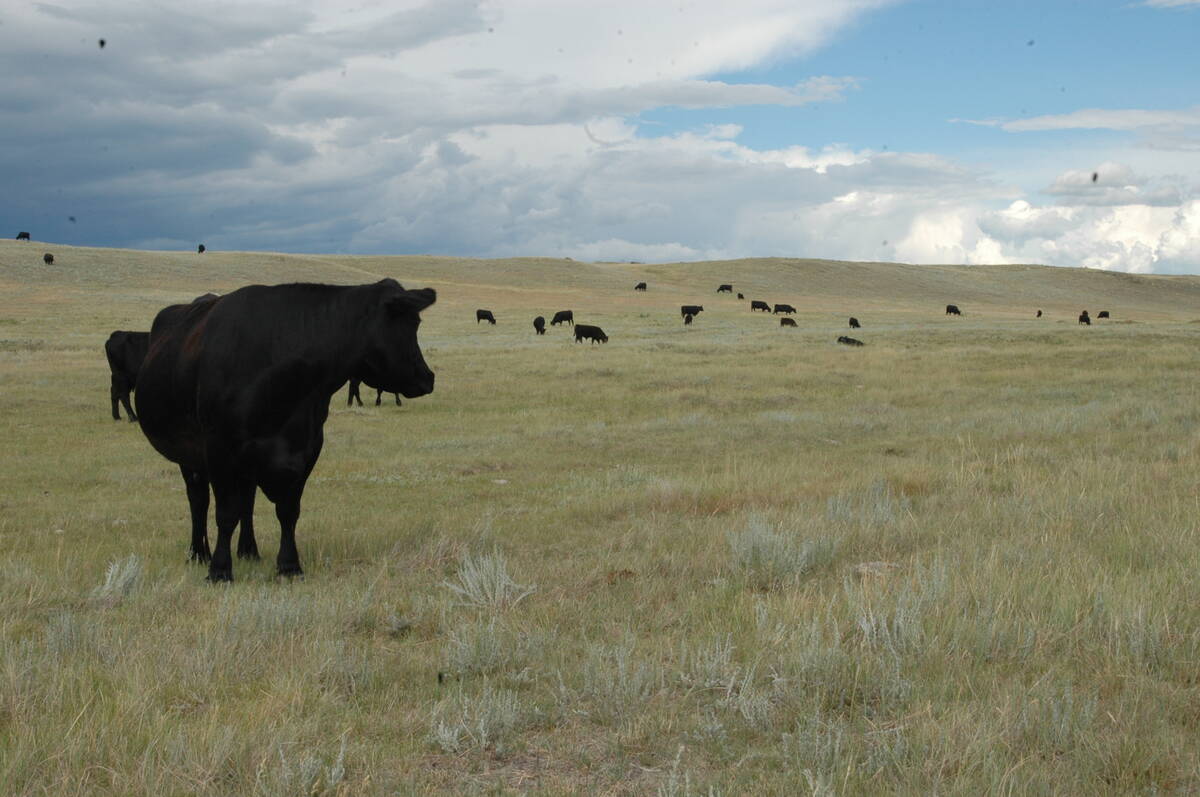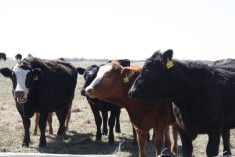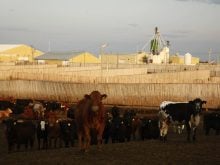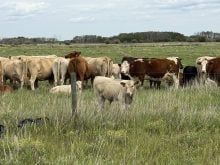This cattle market information is selected from the weekly report from Canfax, a division of the Canadian Cattle Association. More market information, analysis and statistics are available by becoming a Canfax subscriber by calling 403-275-5110 or at www.canfax.ca.
Record Fed Prices
Record-high prices for Western Canadian fed cattle showed no sign of diminishing during the week ending April 11.
Read Also

Canadian Food Inspection Agency slammed for handling of bovine tuberculosis case
The federal government leans heavily on producers to “take one for the team” and risk their livelihoods without any reassurance of support.
Alberta fed steers ended the week at $283.99 per hundredweight, $0.10 per cwt. higher than the previous week. Fed heifers eased by a mere $0.44 per cwt., closing the week at $281.64 per cwt.
This is the fifth consecutive week that the fed market has strengthened, aligning with historical trends of the fed market peaking in spring.
Dressed sales were $5 per cwt. stronger than the week prior, closing the week at $475 per cwt. delivered. All three Western Canadian packers showed buying interest, and cattle that traded were scheduled for delivery ranging from immediately to early May.
There was no U.S. buying interest noted this week.
The Alberta cash-to-futures basis was reported at -$0.97 per cwt. Not only was this the fourth consecutive week that the basis has strengthened, but it was also the strongest basis reported thus far in 2025.
After reaching annual highs on April 2, the nearby live cattle future contract dropped by $7.90 per cwt. as a result of market volatility due to U.S. tariffs.
Canadian fed cattle and cow exports to the U.S. hit an annual high of 20,544 head during the week ending March 29. This volume is 42 per cent greater than this time last year.
Year-to-date exports are 22 per cent higher than in 2024.
In Ontario, dressed sales rose by $15 per cwt. to $485 per cwt. delivered, with cattle scheduled for delivery in the second half of April.
Ontario fed prices were at a $1.50 per cwt. discount against the Nebraska market on a cash-to-cash basis. This is the strongest basis seen since September 2024.
Non-fed market strengthens
Butcher cow prices rose by $13-16 per cwt. during the week ending April 11, setting new record highs.
Strong prices are enticing producers to bring their calving-season culls to town, and seasonally smaller non-fed volumes have been met with good feeder cow and packer demand.
Alberta cow prices are now at a premium against the U.S. market on a cash-to-cash basis.
Butcher cows in Ontario traded $5-10 per cwt. higher than the previous week. Canfax anticipates some Eastern Canadian cows will be heading west to be put on feed in Alberta and Saskatchewan.
Year-to-date non-fed beef production in Western Canada is nine per cent lower than in 2024, while year-to-date cow prices for the region are 33 per cent higher than this time last year.
New record highs for feeders
Stronger prices were seen across all weight classes of the calf and feeder market, despite live cattle contracts falling by almost 800 points.
On the supply side of the market, feedlots appear to be bullish. The demand for bunk replacement also seems to be fuelled by record-high fed cattle prices.
New record-high prices were set for Alberta calves weighing 400-500 pounds and feeders weighing 700-800 lb.
Open breeding heifers were reported trading in the range of $3,000-4,000 per head.
Prices have picked up with more open, palpated breeding-quality heifers hitting the market, Canfax reported. However, demand has been mixed, and some of these heifers are off to feedlots and grass operations.
Ontario steers weighing more than 800 lb. traded at a premium of $18-29 per cwt. against the Alberta market.
Canadian feeder cattle exports for the first quarter of 2025 are the largest since 2019. As a result, Western Canadian packers may need to strengthen basis contracts to see fewer feeders going across the border.
Cow-calf pairs brought an average of $5,250 per pair this week, $1,400 per pair higher than in 2024. Younger cows with calves born in February or March at side brought up to $7,000 per pair.
Bred cows averaged $4,275 per head, many finding new homes on cow-calf operations rather than going to slaughter.
Cutout prices ease
With Easter purchasing wrapping up for the year, U.S. cutout prices drifted lower during the week ending April 11.
Choice cutouts fell by 1.2 per cent to $334.29 per cwt., while Select cutouts eased by 0.9 per cent to close the week at $314.96 per cwt. The Choice-to-Select spread was $19.33 per cwt.














